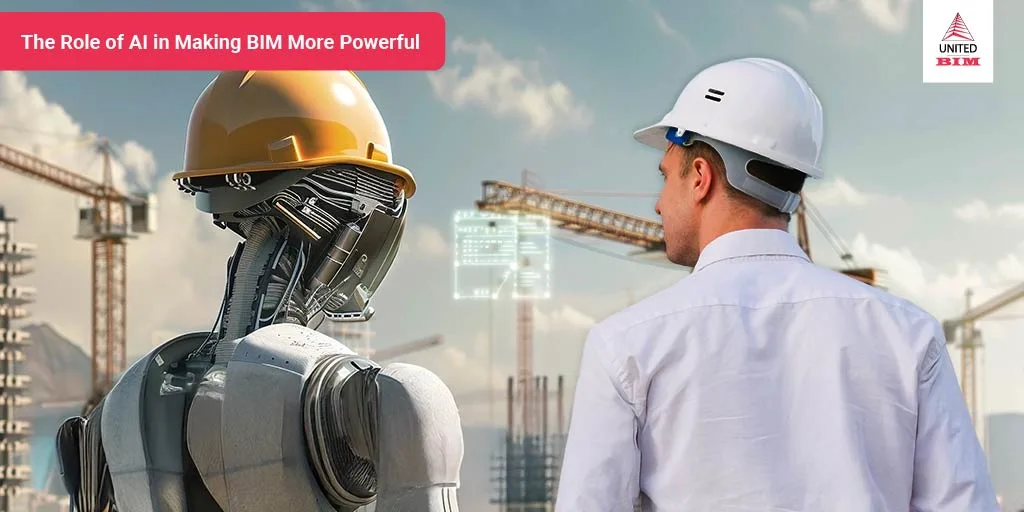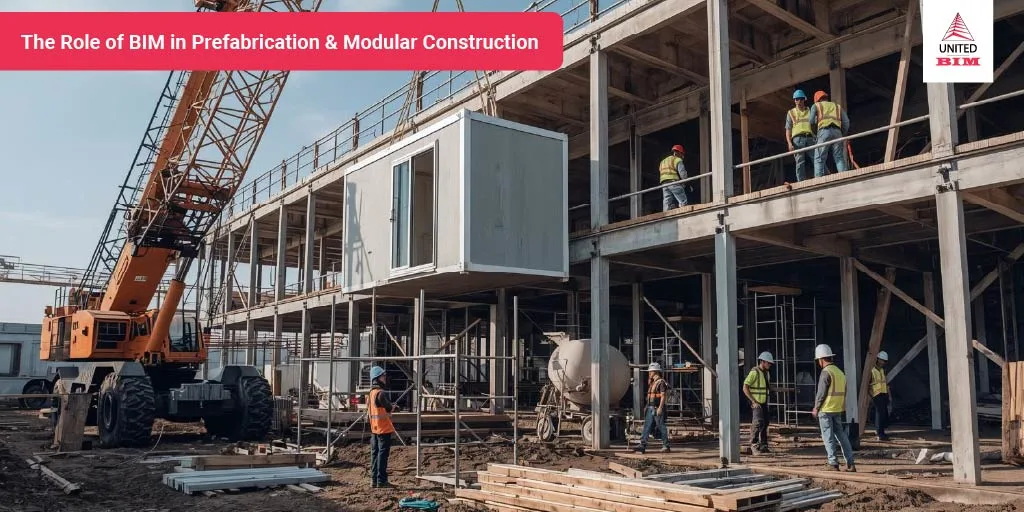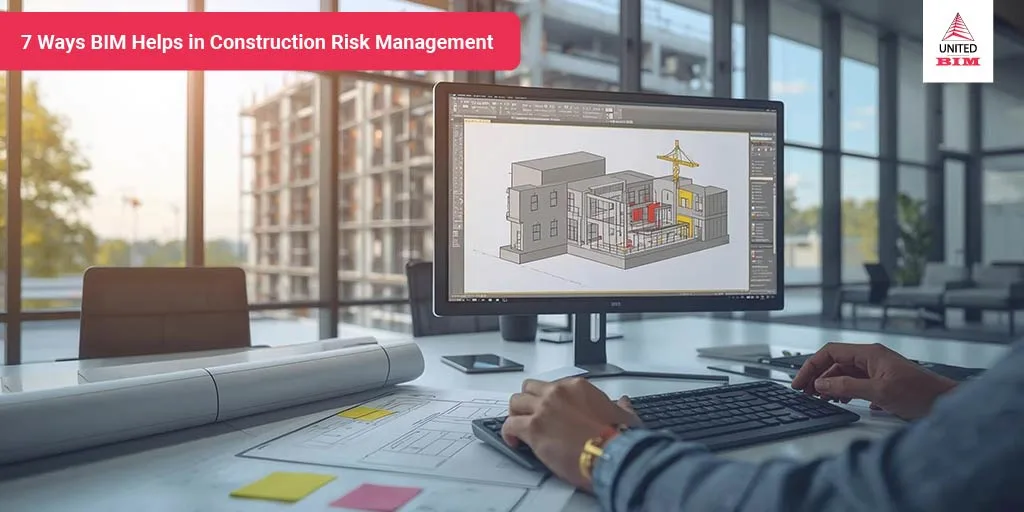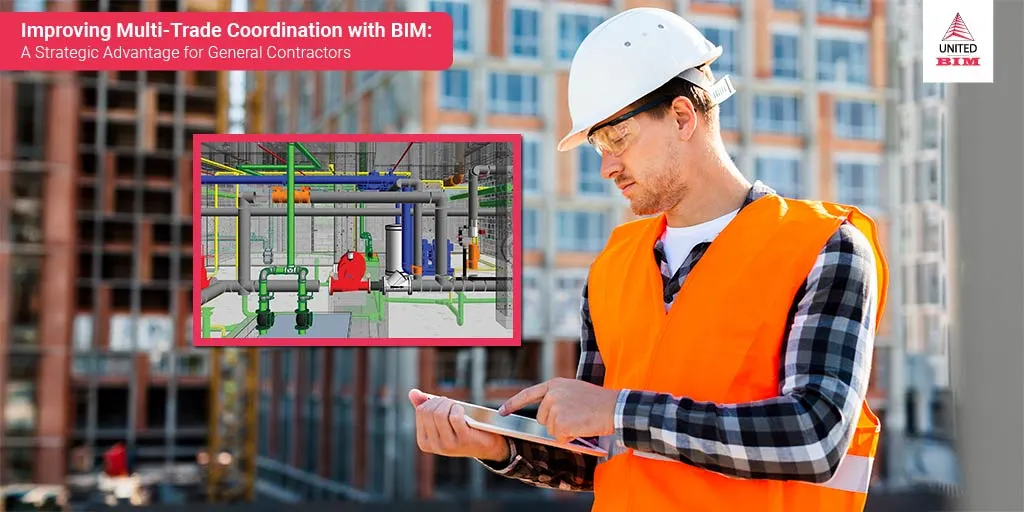Last updated on: October 17, 2025
There’s no doubt that Building Information Modeling has transformed how projects are designed, coordinated, and delivered. It’s moved us from disconnected drawings to a collaborative, data-driven process that cuts errors and reduces rework.
Now AI is entering the conversation. In construction as a whole, AI is being explored for everything from scheduling to safety monitoring. Within BIM, it’s showing real potential to speed up processes, improve decision-making, and make project data more valuable.
For architects, contractors, developers, and facility owners, AI in construction isn’t just a tech headline anymore. The real test is simple- can AI in BIM help you finish projects faster, keep costs in check, and hand over a better-performing building?
AI is stepping into the mix, promising to make BIM faster, smarter, and more insightful. The question is, where does the promise end and the real, usable value begin? Let’s break it down.
How AI is Transforming BIM in Construction?
Now, we are talking about capabilities of Artificial Intelligence (AI) that are already being used in real projects.
01.
Automated data validation
AI can scan BIM models for missing parameters, wrong naming, or non-compliance with standards. Think of it as a constant quality check that catches issues before they show up on site. This is similar to how AI in construction project management is used to detect data errors early.
02.
Faster Scan-to-BIM modeling
Turning point clouds into usable models takes time. AI can recognize pipes, ducts, columns, and walls automatically, cutting down hours of manual work. It’s the same object recognition capability that’s being used in AI for construction documentation and progress tracking.
03.
Quick geometry classification
Assigning categories and parameters to hundreds of elements in a model is tedious. AI can handle this in minutes, letting teams focus on design and coordination.
04.
Smarter clash and risk prioritization
Clash detection often produces long lists that are impossible to tackle at once. AI can sort them by severity and potential impact, so the most critical issues get solved first. The same principle is used in AI construction safety systems to prioritize hazards.
05.
Generative design suggestions
It can evaluate multiple design goals at once like daylight, adjacency, cost, and space efficiency and generate options for review. You still make the final call, but you get there faster. This mirrors how AI in construction planning can generate optimized schedules.
06.
Safety issue detection
From site photos to inspection notes, AI can identify common hazards and tag them according to major safety risk categories.
07.
Organizing project visuals automatically
With so many drone shots, site photos, and inspection images, finding what you need can be a headache. AI can tag and categorize visuals so you can instantly pull up “above ceiling” work or “ladder use” images when needed.
08.
Better connected project data
When BIM data is linked with schedules, cost data, and IoT sensors, AI can deliver insights that no single system could provide.
How AI in BIM Delivers Real Value for Your Projects
For anyone investing in BIM services, AI can change how your project runs from day one to handover. Here’s what that can mean in practice:
Shorter delivery times
AI automates time-consuming tasks like data validation, geometry classification, and clash prioritization. That means your BIM team can produce coordinated models and drawings faster, helping you hit milestones without constant deadline pressure.
Lower costs
Less manual labor in modeling and coordination directly reduces billable hours. More accurate clash detection and risk prediction mean fewer change orders and less rework.
Better decisions earlier
AI-powered simulations and analysis can highlight potential design, coordination, or safety issues early in the process. That gives architects, contractors, and owners the clarity to make confident choices before they turn into costly on-site fixes.
Improved sustainability
By analyzing material usage, energy performance, and alternative design options, AI can suggest ways to reduce waste and improve efficiency. This isn’t just good for the environment, it can also lower long-term operating costs.
More valuable as-builts
AI-enhanced BIM models are richer in data and easier to maintain. Facility managers get accurate, searchable information that supports maintenance, repairs, and future upgrades for the entire building lifecycle.
Industry Perspective: What AI Can — and Can’t — Do in BIM
Not everyone in the AEC industry sees AI in BIM as a silver bullet, and that’s an important point to recognize. As one construction professional put it:
“BIM isn’t design, it’s a dataset and a workflow. AI isn’t solving creatively new problems, it’s applying known solutions. What it can do very well is remove the repetitive, tedious tasks that bog down the design process, like test fits, parking layouts, or reclassifying elements in a model. That frees up skilled designers to focus on the bigger creative decisions. But the risk is, if younger professionals don’t do some of those manual steps, they may not learn why those elements matter in the first place.”
This perspective highlights something critical: AI is a tool for automation, analysis, and optimization, not a replacement for human expertise. It can cut the grunt work, accelerate workflows, and give designers and contractors sharper insights, but the creative and contextual decisions still belong to people.
The Limits of AI in BIM
AI has made some BIM tasks faster and smarter, but there are boundaries to what it can deliver, and knowing those boundaries is key to using it effectively.
01.
No fully automated, perfect LOD 500 model
Even the most advanced AI tools can’t create a fully detailed, clash-free LOD 500 model without human input. AI can speed up detection and suggest fixes, but final model accuracy still depends on an experienced BIM coordinator checking and validating every element.
02.
Lack of contextual understanding
AI can process huge datasets, but it doesn’t grasp project-specific context like site constraints, construction sequencing challenges, or local building codes unless those details are explicitly provided and modeled. This means it can’t replace human judgment during coordination.
03.
Dependent on data quality
AI output is only as good as the input it receives. If the BIM model data, scan data, or project information is incomplete, outdated, or inconsistent, AI will amplify those errors instead of correcting them.
04.
Limited in creative decision-making
AI can suggest multiple layout options based on programmed parameters, but it doesn’t have the ability to innovate beyond the data it’s trained on. Creative problem-solving and client-specific design nuances still require human expertise.
05.
Integration and standardization challenges
BIM already struggles with interoperability across different software and proprietary file formats. AI tools often depend on clean, standardized data formats- something many project teams still find difficult to achieve.
06.
Cost and adoption barriers
While AI can reduce long-term costs through efficiency, the upfront cost of AI-capable BIM tools and the training needed to use them effectively can be a hurdle, especially for smaller firms or projects with tight budgets.
07.
Risk of over-reliance
Treating AI as an “auto-pilot” for BIM is risky. If teams stop questioning results or double-checking outputs, small inaccuracies can snowball into expensive construction errors.
The Smart Play: AI + BIM Expertise
AI works best when it’s in the hands of experienced BIM professionals. It accelerates repetitive, detail-heavy tasks so experts can spend more time solving complex coordination and design problems.
For you, that means faster delivery, fewer errors, and lower costs without sacrificing quality or creativity.
If you’re evaluating BIM services providers, ask how they’re using AI today. The right answer isn’t “AI does everything.” It’s “We use AI where it can save you time, reduce risk, and make your data more valuable.”
In conclusion, AI is adding a new layer of capability to what BIM can already do well. It’s not without its limits, but when used wisely, it can help teams design smarter, coordinate better, and deliver projects with fewer surprises. For architects, contractors, developers, and owners, that means saving time, controlling costs, and getting a final result that performs as intended. The tools will keep improving and the projects that embrace them early will be the ones that set the standard for what’s possible in construction.
AI in BIM refers to using artificial intelligence to automate, analyze, and improve Building Information Modeling processes, making tasks like clash detection, design suggestions, and data validation faster and smarter.
AI speeds up tasks like object recognition from point clouds, geometry classification, and clash prioritization, reducing manual work and helping teams meet deadlines faster.
No. AI can assist with modeling, but human expertise is still needed for quality checks, creative decisions, and handling project-specific complexities.
Key benefits include faster delivery, reduced rework, lower costs, better design decisions early, improved sustainability, and more accurate as-built models for facilities.
No. AI handles repetitive, time-consuming tasks, but creative decisions and project-specific solutions still need human input and expertise.
About the Author

Coordination Manager / VDC Manager at United BIM
With over 10 years of experience in the AEC industry, Akash Patel is a seasoned Coordination Manager and VDC Manager at United BIM. His expertise lies in managing complex MEP-FP coordination projects and leveraging cutting-edge BIM technology to ensure seamless collaboration and precision. Akash is dedicated to delivering high-quality, detailed models that meet the demands of modern construction. He is passionate about optimizing workflows and driving innovation within the BIM field.








